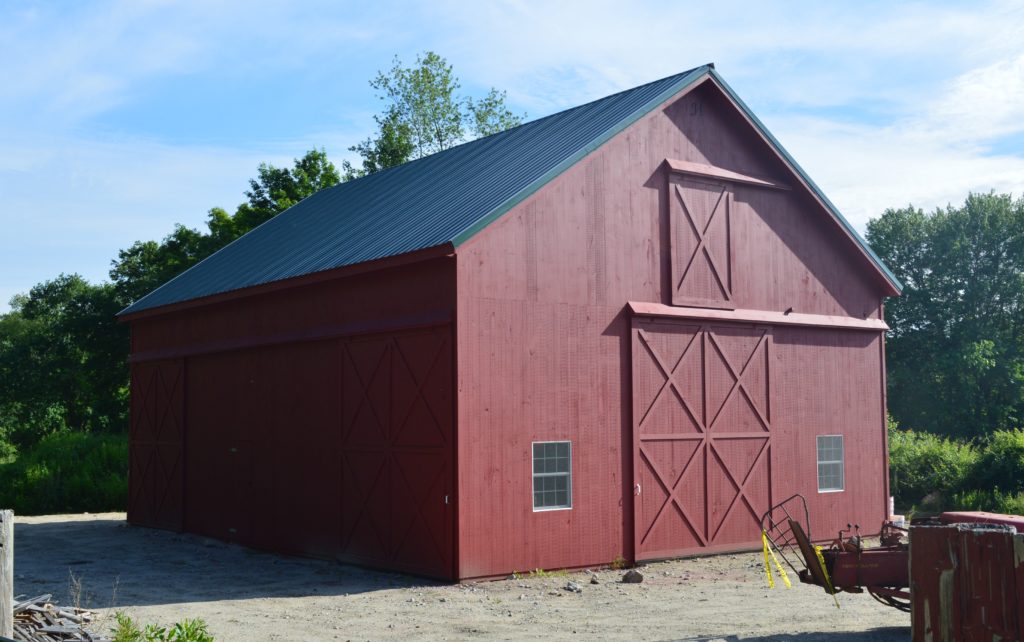Return to Introduction & Lessons at a Glance

Introduction
This lesson plan is about family farms and features Jewish farmers in Connecticut in the 20th century. The lesson plan highlights the Himmelstein Homestead Farm in Lebanon, Connecticut. The farm has been owned by the same family for more than 100 years.
Lesson Objective
By comparing and contrasting Connecticut family farms, students will be able to identify agriculture native to Connecticut and the role of the family farm in the economy.
Grade Level
3 - 6
Lesson Plan PDF
https://whereilivect.org/wp-content/uploads/WILCT-Family-Farms-Lesson-Plan.pdf
Introductory Discussion Questions
Q. Have you ever visited a family farm in Connecticut?
Q. What is a family farm?
A. A farm that one family operates to support themselves. A family farm is a small business run by one family. They grow crops, raise livestock or take care of other farm animals, maintain buildings and equipment, and sell the products from the farm.
Q. Why are farms important?
A. They grow the food that we buy at the grocery store or the farmers market, or grown plants for our gardens and yards.
Q. What kinds of things are grown in Connecticut today?
A. Produce, poultry, eggs, tobacco, Christmas trees, fruit, and nursery plants.
Q. Why is it important to preserve farmland for the future?
A. Not all land has the right type of soil to grow crops. Good farmland is sometimes built on or paved over for houses or businesses. This reduces the amount of land available for farmers to use for crops.
Lesson Activity & Procedures
1. Distribute the article about the Himmelstein Homestead Farm either by providing the link, pulling it up on a large screen, or printing out a few student copies for students to share. The teacher should use this article as a shared experience (mentor text) reading through the article with the class pointing out information all about what’s farmed in Connecticut and why.
2. Next, in groups of two or three, students go on to the website of another Connecticut family farm (links provided below). They should begin to verbalize some of the differences and similarities between this farm and the Himmelstein Farm.
3. Students record their observations in a T chart listing or Venn diagram, writing statements of similarities and differences.
Examples of observations between the Jones Farm and Himmelstein Farm:
- both families were immigrants (Jones family Welsh-Irish)
- both farmed dairy, pumpkins
- both had great barns
- they were from different countries
- the Jones family farmed strawberries, Christmas trees, and now has a winery.
- The Himmelstein Farm worked with tobacco and sells food to local restaurants.
4. After the students work on their T chart or Venn Diagram, appoint some students to circulate a list titled: “What’s Grown in Connecticut.” The left side could list the name of the farm and the right side could list what is farmed there. They are collecting information as they circulate and positively comment on their classmates’ work.
Silverman’s Farm
Jones Family Farm
Belltown Hills Orchards
Fair Weather Acres
Hindinger Farms
Maple Lane Farm
Six Paca Farm
Additional Resources
Connecticut Explored
“Hebrew Tillers of the Soil”
The Himmelstein Homestead Farm is listed on the Connecticut State Register of Historic Places at
https://connecticutbarns.org/upload/state_reg/20754/sr-barn_lebanon_northst_6_no.19437.pdf
Information about Farmland Preservation
Connecticut Farmland Trust information about farmland preservation
https://ctfarmland.org/
Working Lands Alliance, farmland preservation
http://workinglandsalliance.org/who/
Information about Barns
Historic Barns of Connecticut, Connecticut Trust for Historic Preservation
https://connecticutbarns.org/history/about-the-connecticut-barn
Barns and Barn Design in Connecticut
More about Connecticut’s Jewish Farmers
The Baron Hirsch Jewish Farmers Community
https://thebaronhirschcommunity.org/2017/04/06/jewish-farmers-in-connecticut/#more-125
New England Historical Society
http://www.newenglandhistoricalsociety.com/flashback-photo-jewish-farmers-colchester-conn/
American Jewish Historical Society
http://americanjewisharchives.org/publications/journal/PDF/1995_47_02_00_raider.pdf
Donohue, Mary M., Briann Greenfield, and Jewish Historical Society of Greater Hartford. A Life of the Land: Connecticut’s Jewish Farmers. West Hartford, CT: Jewish Historical Society of Greater Hartford, 2010.
ConnecticutHistory.org
“Late Nineteenth Century Immigration in Connecticut”
https://connecticuthistory.org/late-19th-century-immigration-in-connecticut/
“Early 20thCentury Immigration in Connecticut”
https://connecticuthistory.org/early-20th-century-immigration-in-connecticut/
“L.B. Hass Company and the History of Tobacco in Connecticut (Jewish farmers)”
https://connecticuthistory.org/cash-crop-l-b-haas-co-and-the-history-of-tobacco-in-connecticut/
Connecticut Agriculture (general overview)
https://connecticuthistory.org/topics-page/agriculture/
Word Wall
Immigrant, family farms, agriculture, crops, livestock
State Standards Alignment
ECONOMICS
Economic Decision-Making
ECO. 3.1. Compare the benefits and costs of individual choices.
Supporting Questions:
· Why do we live where we live?
· How do we get the things we need to live (food, clothing, goods, etc.)?
· Historically, what goods made in Connecticut have we traded elsewhere?
GEOGRAPHY
Human-Environment Interaction: Places, Regions, and Culture
GEO 3.4 Explain how culture influences the way people modify and adapt to their environments.
GEO 3.6 Describe how environmental and cultural characteristics influence population distribution in specific places or regions.
Compelling question:
· What is Connecticut’s state identity and in what ways is that identity inclusive of all residents?
Supporting questions:
· How have various groups contributed to Connecticut’s identity?
What is the “identity” of Connecticut today?